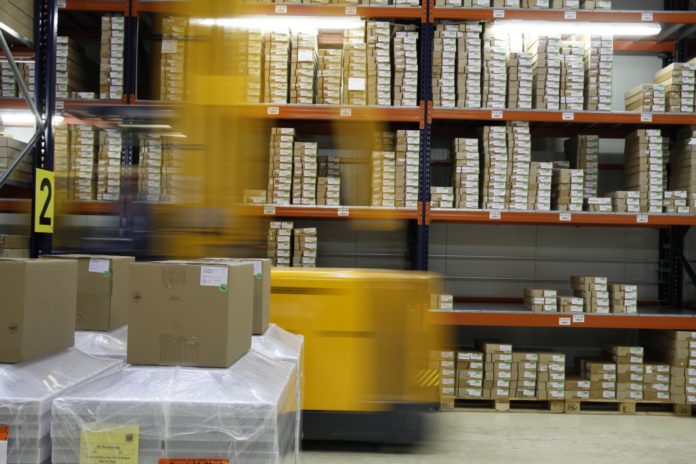IDTechEx, a company providing independent market research, business intelligence and events on emerging technology, released a report entitled Mobile Robots, Autonomous Vehicles, and Drones in Logistics, Warehousing, and Delivery 2020-2040 that provides an analysis of key players, technologies and markets.
They note that there is still a rising trend of investing in and acquiring mobile robotic companies that seek to automate goods movement within warehouses, fulfillment centers and manufacturing facilities. In some cases, companies fronted extremely large multiples for such investments. Looking at three recent cases, IDTechEx discusses possible reasons for such high valuations.
Amazon’s acquisition of Canvas Technology
In April 2019, Amazon acquired Colorado based Canvas Technology for an undisclosed sum. Canvas had developed an advanced navigation technology, enabling its mobile platforms to achieve intelligent autonomous mobility. Additionally additional object detection and classification enable the robot to operate in more dynamic, complex, and challenging environments and to achieve more intelligent path planning in response to different objects and environments.
IDTechEx suggests that this move can be seen as part of the same trend where Amazon acquired Kiva Systems in 2012 for a huge $775 million, allowing Amazon to boost the productivity of the latest generation of its fulfillment centers by automating the goods-to-person step. The robot fleet is estimated to have increased at an approximate rate of 15k or so robots per year and was estimated to have recently reached 100k units.
The technology of Canvas allows automation to be implemented in existing centers whose infrastructure cannot be readily altered to enable Kiva-like goods-to-person autonomy. Furthermore, this technology gives an excellent pathway towards autonomizing larger vehicles, such as forklifts and tuggers. As such, it extends Amazon’s capability to all manner of vehicles and situations found in fulfillment automation. Amazon considers this a core strategic competence.
Shopify’s acquisition of 6 River Systems
Shopify acquired 6 River Systems for $450 million (60% cash), which represents a huge multiple. 6 River systems had previously raised $45 million, and in the summer of 2019, their robots were deployed in 30 customer sites. It did have a strong sales pipeline, which could result in >500 robot unit sales in 2020. However, they argue that this uptick in sales on its own does not justify the valuation.
The research suggests that Shopify, recognizing the strong potential in the short and long terms of 6 River’s technology, was motivated to make this acquisition, as in June 2019, it announced the Shopify Fulfillment Network. 6 River’s vertically integrated full-solution approach allowed Shopify to bring the entirety of a key strategic competence in-house. The technology will likely be initially rolled out at select 3PLs (Third Party Logitistics) before Shopify puts in place its own infrastructure.
IDTechEx predicts that taking another mobile robotic company off the market through acquisition will put third part fulfillment center operators in a difficult position as to which technology to adopt in the future. This suggests that system interoperability and ease of integration with an existing automated system will become important in the future, as operators do not want to be blind-sided again.
Teradyne’s acquisition of AutoGuide
Another acquisition this year was that of Teradyne, paying $165 million ($58 million in cash and the rest conditional on reaching performance targets) for AutoGuide, a company with barely $4 million in revenue in 2018.
This acquisition – if the entire $165 million is realized – represents a huge multiple, even when considering the projected doubling of the revenue of the target company. This acquisition enables Teradyne to expand its product portfolio in the warehouse and logistics automation business, especially taking into account its previous acquisitions.
Teradyne 1.5 years ago acquired Mobile Industrial Robots (MiR) for $148 million. MiR developed SLAM-based mobile platforms, mainly acting as low-payload deck-load mobile conveyors. Teradyne had also acquired Universal Arms (UR) for $227 million in 2015. UR is the pioneer and leading supplier of collaborative arms. Teradyne also owns Energid.
This current move complements MiR’s product line-up, bringing it to the AGV (Automated Guided Vehicle), as well as SLAM-based, high-payload vehicles such as tuggers. As such, it exposes Teradyne to every sector of the market, even if the acquired firms are operated as stand-alone concerns.
IDTechEx assesses that the market for how such autonomous mobile robots (AMRs) will grow, forecasting that more than 200k robots could be sold within the 2020-2030 period.
The future of Autonomous Mobile Robots
IDTechEx also report that many firms and research groups are deploying deep learning to enable robots to pick novel and irregularly shaped items rapidly and with high success rates. To this end, various strategies for data collection/annotation and for Deep Neural Network (DNN) training are being followed.
A limited number of firms have integrated picking arms on mobile platforms. Today, these mainly picked box-shaped items in known environments. However, technology progress will bring these technologies to more varied items. It will also allow better integration of the robotic arm with the mobile platform.
The research suggests that that picking mobile robots able to pick regularly shaped items will be in the learning and low volume deployment phase until 2024. Thereafter, the sales will pick up, but it is predicted that significant annual sales volumes will only occur after 2030.
As for robots able to pick irregularly shaped items, the research forecasts that the development and low-volume deployment phase could last until 2030. In the longer term though, we forecast that 36% and 38% of AMRs in warehouses sold in 2040 will be able to pick regular – as well as irregular-shaped items, respectively. This points towards a major technology transformation, requiring automation beyond just autonomy of movement.














